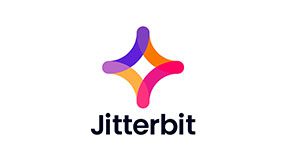
These marketplace-ready retailers are being rewarded, with revenue from marketplace sales growing by 9.4%—outstripping the 7.4% growth by companies without marketplace presence.
It’s a similar picture around the world. According to Insider Intelligence, US marketplace sales will reach over $357 billion—despite decelerating growth—amounting to over a third of all online sales in 2022.
Whether it’s Amazon, eBay, Alibaba, Etsy, or one of the upcoming names on the rise—marketplaces are the place to be.
The modern consumer
This growth is, of course, being driven by the modern shopper. These are buyers who are digitally savvy but time-poor. Increasingly, they are looking for ways to cut expenses in the face of a cost of living crisis.
Marketplaces satisfy those needs. All-in-one, personalised, convenient platforms are easy enough to use and are designed to enable users to complete purchases in a few clicks. Moreover, having options laid out in front of them allows for straightforward product and price comparison.
According to Cebr, nearly a third said they saw no obvious drawback to using marketplaces—and nothing would hold them back from continuing to use them.
Trends for 2023
It’s no surprise then that merchants, brands, and retailers are increasingly adopting the marketplace into the core of their strategy, rather than treating them as a standalone satellite project on the edges of their business.
But what do retailers need to know going forward? What trends are going to shape their marketplace play, whether they’re well-established across multiple marketplaces or preparing to take their first steps in 2023?
For marketplace retailers, there are three key trends to be aware of:
1. An increasing variety of marketplaces
While the behemoth Amazon remains unchallenged—6.5bn visitors a year from Europe alone and a turnover of over $460bn each year—we’ve come a long way from the old ‘Amazon or eBay’ dichotomy. It’s certainly not the only option in European markets. Bol and Allegro are building themselves a strong regional presence.
We’re also seeing the “marketplace market” grow. Niche and retailer-run marketplaces are rising in popularity, like French supermarket Carrefour, whose own marketplace sells specialist foods that complement its in-store offering.
2. Increasing desire of brands to have more say and a bigger presence
This increase in variety has encouraged brands and retailers to have a presence across multiple marketplaces. Many of the top 500 brands in the world are branching out from the likes of Amazon, eBay, and Alibaba or, as mentioned, setting up their own marketplace offering.
The possibility for brands to own and control marketplaces has prompted a trend for control. Marketplaces can be crowded places, and brands want the option to manage their profile and differentiate themselves from rivals as much as possible.
3. Marketplaces and new mediums
The metaverse has been one of the buzzwords of 2023. Behind all the chatter, its potential could have a real impact on retailers and marketplaces. The option to buy virtual products, or virtual products with ‘real’ counterparts, opens new possibilities for retailers. It also raises new questions about how they’re going to fulfil customer orders.
Pipes and plumbing
It’s an exciting time to be a retailer with significant growth opportunities, if they get their marketplace play right.
But getting it right is easier said than done. I expect the pressure to mount for internal teams—who are now responsible for executing the right marketplace strategy. As I like to say, that dream house is just a shell if the pipes and the plumbing beneath the floorboards aren’t fitted properly—and it won’t be long before you’re knee-deep in water.
The need to develop the right infrastructure is perhaps why an adoption gap exists between bigger and smaller companies. According to the ONS, just 3% of UK micro-businesses were selling through marketplaces at the last count in 2019.
To succeed as a marketplace player, any manual data processes must be replaced by automated connections, microservices, analytics, and APIs. It’s the only way retailers can efficiently manage their marketplace(s) presence.
Marketplaces are living, breathing things—always on, always evolving, and always open. Retailers can ill-afford to have too many disparate, disconnected systems in play, leading to data silos and an incomplete view of the customer relationship.
Find your happy (market)place
As with every technological boom, there are companies behind the scenes that enable the success of other players. Integration platforms-as-a-Service (iPaaS) companies are already proving themselves as the enablers of the marketplace era. They connect and automate the many connective threads of a successful eCommerce and marketplace business together.
Automated integration delivers retailers several competitive advantages:
- Meet growing omnichannel needs
- Master supply chain logistics
- Control supplier management
- Inform real-time purchasing decisions with accurate real-time data
- Provide the insights the modern eCommerce and marketplace business needs to run an effective operating model
At Jitterbit, we’re able to take this responsibility away from merchants, suppliers and brands, and give back to them greater control and a better-managed inventory.
They can establish control through a simple no-code platform. It’s getting even easier for these no-coders to do some of the plumbing themselves, without having to call in an expensive developer. The cost on the tech side is dropping too thanks to the ‘common language’ created by low-code that enables entities to plug in with less input required than before. Custom-coding and one-time-only apps are on their way out in 2023. Generic, reusable, and well-architected technology will make it easier for companies to pick up what they need and adapt it for their local marketplace. It will allow them to get on with the business of selling.
Jitterbit, the API transformation company, makes it quicker and easier for businesses to exploit data from any source, empowering them to rapidly innovate and make faster, more effective decisions. The Jitterbit API integration and low-code application development platform enables companies to quickly create and connect SaaS, on-premise, and cloud applications and instantly infuse intelligence into any business process.


























